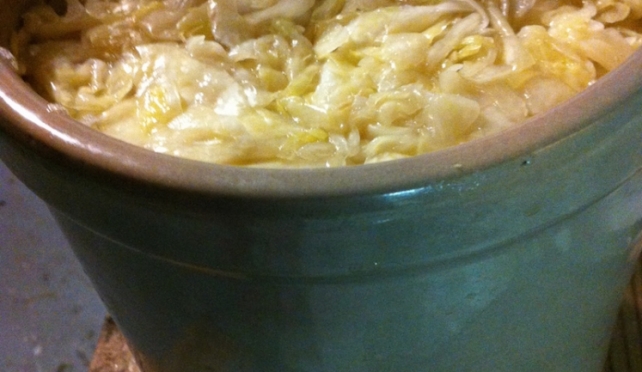By Chela Cooper
As part of the Healthy Eating, Healthy Living professional development program, the Farm's staff visits teachers' classrooms to team-teach lessons demonstratrating how healthy foods and gardening can be used to teach across the curriculum. A sauerkraut lessons touches on chemistry, microbiology, history, and seasonality. Here's how to conduct your own sauerkraut experiment at home!
- Shred fresh cabbage and pack it into a clean mason jar or plastic quart container, leaving an inch or two of head room. Caraway seeds, hot pepper flakes, or other spices can be mixed in if desired.
- In a separate container, make a brine with a ratio of one tablespoon kosher salt per cup of water. Stir or shake the brine solution until salt is dissolved.
- Slowly pour the brine solution over the packed cabbage, allowing the air bubbles to rise to the surface. Using clean hands or utensils, tamp the cabbage down to free all air bubbles from the mixture.
- Continue to slowly fill the container until the cabbage is just covered by the brine, leaving one or two inches of head room at the top of the container.
- Cover the container with a towel and let ferment at room temperature or in the fridge for 2-5 weeks. Bubbles will rise through the mixture as the cabbage ferments, producing carbon dioxide. The cabbage will soften into the liquid, and the volume of liquid will appear to increase.
- When the sauerkraut is ready, remove some from the brine, rinse with potable water and drain. Now your sauerkraut is ready to eat! Store leftovers in a sealed container in the fridge.


